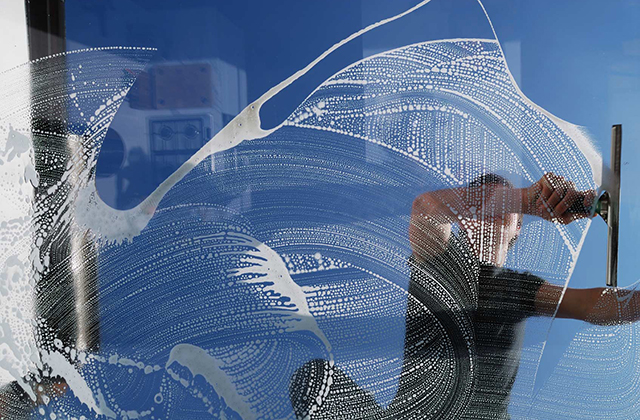Manufacturers will have to blend pure carnauba wax with petroleum distillates, solvents, and other essential oils or waxes to produce a workable consistency. The leather odors may be relatively easy to deal with on a small scale, but on a large scale they can seem altogether impossible. Good quality leather will smell quite strong for several years, really. So the real question that should be asked is: Are you sure you want to remove the leather smell from your leather products? Some people actually find the smell of leather rather sexy, and it’s a good indicator that your leather is of high caliber. Who doesn’t want to have that leathery smell on their leather items? Leather protector creates an invisible shield to protect leather and vinyl against premature aging and damaging stains, without harmful oils that can discolour or damage leather.
But to each his/her own, and if you’d rather that your leather product (whether it’s a jacket, car upholstery, the sofa or even your handbag) smells something else entirely, then follow the tips and advice below. For what it’s worth, you have something made of animal hide. You should probably expect it to smell like animal hide.
Leather Smell Removal
* The only true cure (sorry for that pun) for leather musk is age; wait for the smell to go away as the leather ages, that is. You could probably mask it with something else, but putting something on the leather will probably make it take longer for the smell to go away.
* Masking agents are often used to try and take care of problematic odors. The problem with a masking agent is it does just that, it “masks” or hides the leather odor; it will not remove it.
Masking agents are often oil based and can leave a residue on the materials being treated. Masking agents can also trigger allergic reactions in sensitive individuals, such as runny noses and itchy watery eyes. A masking agent will also dissipate with time and it is possible that the original leather odor will return so use with caution.
Potpourri, air fresheners, The Body Shop Scents, a particularly fragrant shampoo, perfumes, lemon juice and whatnot are just some of the many examples you can use to mask that animal hide stench.
* You might want to go into a tack shop (horse supplies), if there’s one nearby, and ask them for help. There are all sorts of leather conditioners and cleaners, and some of them can help cover the odor. Murphy’s oil soap, which is always what cowboys used for cleaning saddles and boots, might also work (as well as making the leather shiny), but then again, many of those same cowboys are usually trying to keep the leather smell!
* On a small scale, leather odors can be removed by simply placing the offending article of clothing or leather product into an airtight container with baking soda for a few days. This restoration treatment however, may or may not work with this particular odor and it is certainly not possible to carry out on a large scale.
* Here’s another baking soda trick; put your leather item in a bag/pillowcase. Sprinkle a liberal amount of bicarbonate soda in it. Fasten the bag up, give it a good shake, and then leave it in there for at least twenty-four hours. The baking soda should help absorb some of the odors.
* You can also put your leather item in a plastic bag with crumpled-up newspaper for a few days; it should absorb the odor. This is also part of the reason why some shoe stores put newspaper inside their leather shoe products (aside from avoiding the shoe to warp because of the hollow insides).
* Activated charcoal may work just as well as the newspaper method, but you don’t want it to touch your leather item because it will ruin and stain its surface.
* You can also sponge the jacket down with ¼ cup of white vinegar to a bucket or sink of water. Sponge down your beloved leather jacket with the solution. Rinse afterwards, then apply the vinegar solution again, then rinse once more and hang to dry some place out of direct sunlight as heat can damage leather.
Vinegar will condition and clean leather and remove odors, or at least it will once its own sourness dissipates from your leather item. You can do this occasionally or when it gets heavily soiled.
* You can place pandan leaf on your smelly leather item as well. Pandan (P. amaryllifolius) leaves are used in Southeast Asian cooking to add a distinct aroma to rice and curry dishes such as nasi lemak, kaya (‘jam’) preserves, and desserts such as pandan cake.
Fresh leaves are typically torn into strips, tied in a knot to facilitate removal, placed in the cooking liquid, then removed at the end of cooking. Dried leaves and bottled extract may be bought in some places.
* You can also substitute Febreze with most of the cleaning agents here. Febreze uses a chemical compound called cyclodextrin that has been used in household and custodial cleaning products for quite some time.
The sugar-like substance doesn’t necessarily “clean” the leather odors out, but acts as an absorbent-like baking soda or crumpled newspaper, to help soak the leather odor out.
* You can also dip the leather apparel in a bucket of bleach, rubbing alcohol or an ammonia solution for about an hour. You will then find that the foul smell has been replaced by a lovely hospital smell that will certainly attract the nostrils of young gentlemen. A reapplication of leather conditioner afterwards may be necessary.
Here are some words of warning, though; make sure to do some colorfastness test on the leather to make sure it won’t fade because of the bleach. It would also be advisable to use oxygen bleach instead of chlorine bleach to avoid fading and drying in the first place.
Leather FAQ
What is the difference between Full Grain, Top Grain, Genuine and Bonded leather?
All leather isn’t equal and it is important to understand the differences when you are buying leather products. Leather is a natural material. It is strong, breathes, insulates and molds to your body. It is a combination of beauty and strength. Just how beautiful and how strong, however, are influenced by the hide source, cut and process.
* Full Grain Leather: This is the best leather money can buy. It is taken from the top layer of hide and shows the natural markings and grain of the leather. The natural surface of full grain leathers burnish and beautify with use. Full Grain Leather burnishes over time.
This is the exceptional leather used in thick leather goods and leather accessories. Top quality cow and water buffalo full grain leathers are extremely strong and durable. It is used in luxury briefcases and expensive saddles and bridles.
It’s this type of leather that has the most ‘musk’ of all the other types. This sought after (or not-so-sought after) smell makes it distinct among all the rest.
* Top Grain Leather: This is the second highest grade of leather. Top grain leather is split from the top layer of blemished hide and is sanded and refinished. Top grain leather does not burnish and beautify with use, but it is as strong and durable as full grain leather.
* Bonded Leather: Bonded Leather is leather’s bottom. Suede scraps are ground together with glue and resurfaced in a process similar to vinyl manufacture. Bonded leather is weak and degrades quickly with use.
* Genuine Leather: This is produced from the layers of hide that remain after the top is split off for the better grades. These weaker under layers are known as suede. (Don’t be confused with the fuzzy finish also referred to as “suede.”) The suede surface is usually refinished to resemble a higher grade. It can be smooth or rough. Caution: The inferior quality of genuine leather becomes evident with use.
Want to know more? You can read more tips on How to get rid of Leather Smell, plus information to get rid of practically anything else that ails you – from bad breath to telemarketers to cellulite – at http://www.howtogetridofstuff.com
Article Source: http://EzineArticles.com/expert/Fen_Malayan/223381
Article Source: http://EzineArticles.com/1245857

